2013
Lightning shapes mountain tops
Geologists Jasper Knight and Stefan Grab of Witwatersrand University (Johannesburg) show for the first time that lightning strikes causing rocks to explode play a huge role in shaping mountain landscapes in southern Africa, debunking previous assumptions that angular rock formations were necessarily caused by cold temperatures, and proving that mountains are a lot less stable than we think.
Go to the full article
Fragment of Halley's comet hit Earth in 536 A.D., causing drought and famine

According to Dallas Abbott of Lamont-Doherty Earth Observatory, a fragment of Halley's comet hit the Earth ocean in 536 AD, leaving tropical marine organisms in Greenland ice and causing widespread catastrophes.
Earthquake lights - a new theory to explain them
Before the earth quakes, mysterious balls of light sometimes appear. Canadian scientists scrutinized this phenomenon of earthquake lights. Their explanations reach into the depths of the Earth’s crust.
Contradictory predictions: Scientists criticize the UN Climate Report
In its new Climate Report, the UN gives a 2200 page warning about a dramatic change in the environment. Renowned scientists point out contradictions and discrepancies in the report and raise five criticisms against the World Climate Council.
Black Holes throwing iron into space

Black holes are throwing off mysterious jets into space. Astronomers have recently witnessed an eruption. They think that they have recognized the nature of the expulsed matter...
Lightning shapes mountain tops
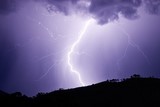
Geologists Jasper Knight and Stefan Grab of Witwatersrand University (Johannesburg) show for the first time that lightning strikes causing rocks to explode play a huge role in shaping mountain landscapes in southern Africa, debunking previous assumptions that angular rock formations were necessarily caused by cold temperatures, and proving that mountains are a lot less stable than we think.
The volcano which brought famine to Europe
An eruption of the Indonesian volcano Lombok has been recently recognized to be the cause of the disastrous meteorological events which beset Europe in the mid-13th century AD and brought about the Black Death.
The Creation of the Gods - Sacrifice as the Origin of Religion: the book by Gunnar Heinsohn
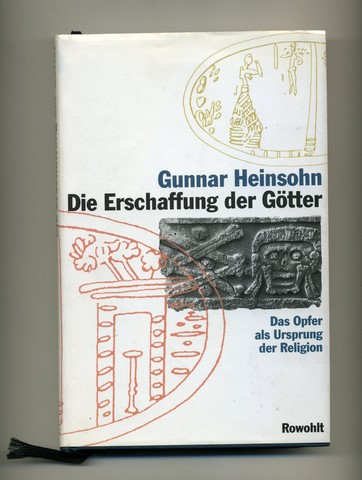
What is a god?
How did the priesthood, and cults of bloody sacrifices come into existence?
How did our forebears arrive at fashioning images of gods in animal- human- or mixed shapes?
Were the gods sacrificed to, or did the sacrificed become gods?
How, in short, did humanity reach this first step of higher culture?
Gunnar Heinsohn's groundbreaking work in the history of religion, based on clues from anthropology, archaeology, mythology and ancient history, is made available for the first time in English, in a serialized form, in a translation by Anne-Marie de Grazia.
Now serialized in Q-Mag.org
Lightning triggered by cosmic rays - the Runaway-Breakdown theory
The greatest mystery since Franklin's time has always been: how do these enormous electric tensions build up in the atmosphere? What powers can possibly be at work, separating positively and negatively charged particles, causing high-power discharges to shoot through the air at a speed of 360 million km/h, and a temperature four times higher than that of the surface of the Sun?

Hurricane Katrina: was New Orleans flooded by the Mississippi waters?
Two hurricanes of such intensity as Katrina and Rita - are an epochal event. Such powerful hurricanes - of the 5th category - are observed extremely rarely in the Atlantic Ocean. Within the last 65 years, only two hurricanes of such intensity hit the US coast - these were Camilla (1969) and Andrew (1992).
Why do these monsters, like Amazon pythons, periodically crawl out of the Atlantic Ocean precisely in the Gulf of Mexico? Oil derricks may be guilty, as they contaminate the superficial water of this almost closed water area. An oil film of a thickness of only 20 to 30 Angström reduces the evaporation of superficial water by 20 percent and more. The waters of the Gulf of Mexico become overheated as the natural ocean/atmosphere power interchange balance is broken.
Vladimir Pudov: role of electromagnetic effects in atmosphere-ocean coupling in tropical cyclones
Vladimir Pudov: How does pollution of the World Ocean contribute to the greenhouse effect?
Over the last decades, the problem of global warming has become ever more urgent. Some scientists contend that we are dealing with a naturally fluctuating climatic process. Over the past century, the mean annual global temperature increased by only 0.50 – 0.80C. Such a growth is well within the limits of natural temperature variations. Others, and they are in the majority, are of the opinion that the recent rapid temperature increase is caused by atmospheric pollution and an increase in the so-called "greenhouse effect."
The Great Plain of Atlantis - was it in Doggerland?
It was inevitable that Doggerland, the part of the North Sea which was left dry for several thousand years after the end of the last ice age, should come to be considered as one more possible location for Plato's Atlantis. Doggerland stretched all the way from the east coast of England and Scotland to Denmark and supported a thriving mesolithic population. "It was the true heart of Europe," says Richard Bates, geochemist at St Andrews University in Scotland. It struggled for several millennia against the rising sea levels, then was submerged in a sudden catastrophe at a date estimated between 6200 B.C. and 5500 B.C. (Maybe caused by, or connected to the Störegga Landslide). Robert Graves himself had briefly considered the area of shallows known as Dogger Bank as a possible location for Atlantis, before dismissing it on grounds of distance.
As it happens, more than decade before geologists focused attention on Doggerland at a 2012 meeting of the British Royal Society, a French mining engineer, Jean Deruelle, had published a book making a strongly argumented case for the notoriously elusive "Great Plain" of Atlantis having been situated on now submerged land in the North Sea. He published his hypotheses in 1999, in a book called L'Atlantide des Mégalithes, as part of a broader examination of the spread of megalithic cultures and little studied West to East movements of populations.
No other hypothesis than Deruelle's tackles so credibly the most outlandish elements in Plato's description of Atlantis: the description of a vast plain, surrounded by a man-made ditch, 180 meters broad and thirty meters deep, large enough to circulate supertankers: it was not a ditch, but a dyke, build over centuries to protect a large part of Doggerland against the slowly rising waters of the North Sea...
Man-made earthquakes
The deadly earthquakes which occurred in Spain in 2011 were triggered by human activity, scientists say. This is not the only time that this happened: new data shows that man bears responsibility for many catastrophic earthquakes.
Controlling hurricanes
An 8 minutes digest of a one hour documentary film made by Cogent/Benger for Canadian Television in 2007 on HOW TO STOP A HURRICANE? It contains a few minutes of an interview of Russian scientist Vladimir Pudov, formerly of the Soviet "Typhoon" project at the Institute of Experimental Meteorology in Obninsk, Russia, talking about a highly interesting experiment.
Sergey Pulinets: Fukushima - remote diagnostics of the radioactive pollution of the atmosphere
The accidents with damage to the atomic reactor in the United States (Three Mile Island, 1979) and in the Soviet Union (Chernobyl, 1986) brought forward the burning issue about the safety of nuclear technologies and the possibilities of objective independent control of the level of radioactive pollution caused by the emissions of radioactive substances into the atmosphere or to the Earth's surface. Special attention should be focused on the problems of nuclear safety in the location of atomic power stations in the seismic active regions of our planet.
Sergey Pulinets: On predicting earthquakes through atmospheric phenomena
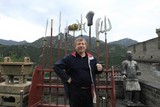
Sergey Pulinets is head of the Moscow Center of Ionosphere Monitoring at Fiodorov Institute of Applied Geophysics, in Moscow, Russia. He is also Principal Researcher at the Space Research Institute in Moscow. Sergey is a world expert on earthquake forecasting through the monitoring of ionospheric precursors.
New: Alfred de Grazia: God's Fire - Moses and the Management of Exodus
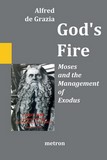
Published March 2013 - 444 pages; 6" x 9"; ISBN: 978-1-60377-085-9; LCCN: 2012923934; Metron Publications - new edition
Richard Stern: a review of 'Cosmic Heretics'
Heretics from the doctrines of modern science have been legion, but scattered. Those here catagorized as "cosmic" include a diverse group of researchers, originally inspired by Immanuel Velikovsky's theories of the cosmos and history, who are convinced that the planets in our solar system have moved and changed within the memory of the human species and even within historical times. Such exo-terrestrial movements, denied by the scientific establishment, have profoundly and often catastrophically impacted every aspect of life on Earth...
Doggerland lost
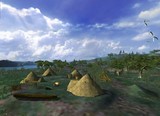
You must imagine the place as a paradise. Lakes lapping gently in the marshes, rivers winding their course through lusch landscapes of grasses and bushes. Food was a-plenty: the waters teemed with fish, birds nested in the reeds, berrybushes covered the banks. Archaeologists surmise that, until about 8,000 years ago, thousands of humans must have lived on what is today the bottom of the North Sea.
Geoscientists have now resurrected their long-gone land
Germany: a danger of volcanic eruptions?
The Eifel is an idyllic low mountain range in West Germany, bordering on the Rhine to the East and the Moselle River to the South, with its highest elevation a mere 747m at the Hohe Acht.
Yet, German geologists have been asking themselves: does the Eifel present a volcanic threat? This possibility is beginning to gather strong support in expert circles, who are ready to go on the offensive. The situation could turn from quiet to catastrophic in a matter of montés. The volcanoes of the Rhineland are not subjected to surveillance. One expert proposes to use ants as an early warning system (.../...)
Fukushima: silenced truth
Thierry Ribault is a French economist doing research in Japan for the Centre National de la Recherche Scientifique (CNRS), of France, working on the modalities of the protection of humans in the context of the Fukushima disaster. He published an article in Rue 89-le Nouvel Observateur an Internet magazine, in which he seeks to keenly dissociate himself from a presentation made by his employer, the CNRS, about the nuclear industry and destined to the "broader public," and which he accuses to silence the true situation at Fukushima (.../...)
Stones falling from heaven

An exploding fire-ball, as seen by Albrecht Dürer - painted on the back of Saint Jerome penitent, Fitzwilliam Museum, Cambridge University.
by Anne-Marie Grazia
Reports about "stones falling from heaven" must have existed since earliest mankind. In the late 16th century, Indians of the Chaco in Northern Argentina knew of a large mass of iron which had fallen from the sky in a place which they still called Piguem Nonralta ("Field of the Sky"), which the Spanish colonialists translated aptly as "Campo de Cielo." In 1576, a Spanish governor from Paraguay sent an expedition in search of a deposit of iron, which the Indians were said to be using to make weapons...
Whodunit? The fall of a meteorite on the 6th of Floreal of the year 11 in L'Aigle, Normandy

On the 6th day of the month of Floreal of the year 11 of the French Republic, that is April 26th, 1803 according to the Gregorian calendar, around 01:00pm, a meteorite exploded in the atmosphere above the city of L'Aigle, in Lower Normandy, and scattered some 3,000 pieces of stone over the countryside. Men and beasts got away with a memorable scare, but nobody and nothing came to serious harm.
That the meteorite of L'Aigle would remain of momentous importance in the history of science is due to the Interior Ministry deciding to dispatch, some two months after the fact, a bright young scientist, Jean-Baptiste Biot, to investigate the "moral and physical circumstances" of the event. A protégé of Laplace, Biot, who was not yet thirty, had already held the chair for mathematical physics at the College de France since the age of twenty-six.
Biot conducted his investigation with the brio of a master detective in a whodunit, and was able to demonstrate once and for all, by sheer logical deductions, based on the examination of clues and the questioning of witnesses, a fact which the science of the time had been obstinately denying: that stones of non-terrestrial origin fell from the sky.
It remains to this day one of the best documented meteoritic events.
The meteorite of Mme Comette
Only 65 meteoritic falls have been historically documented in France over the past four centuries. The latest was discovered in October 2011, when a tradesman repairing a leak in a roof in the Paris suburb of Draveil found a unusual looking stone...

